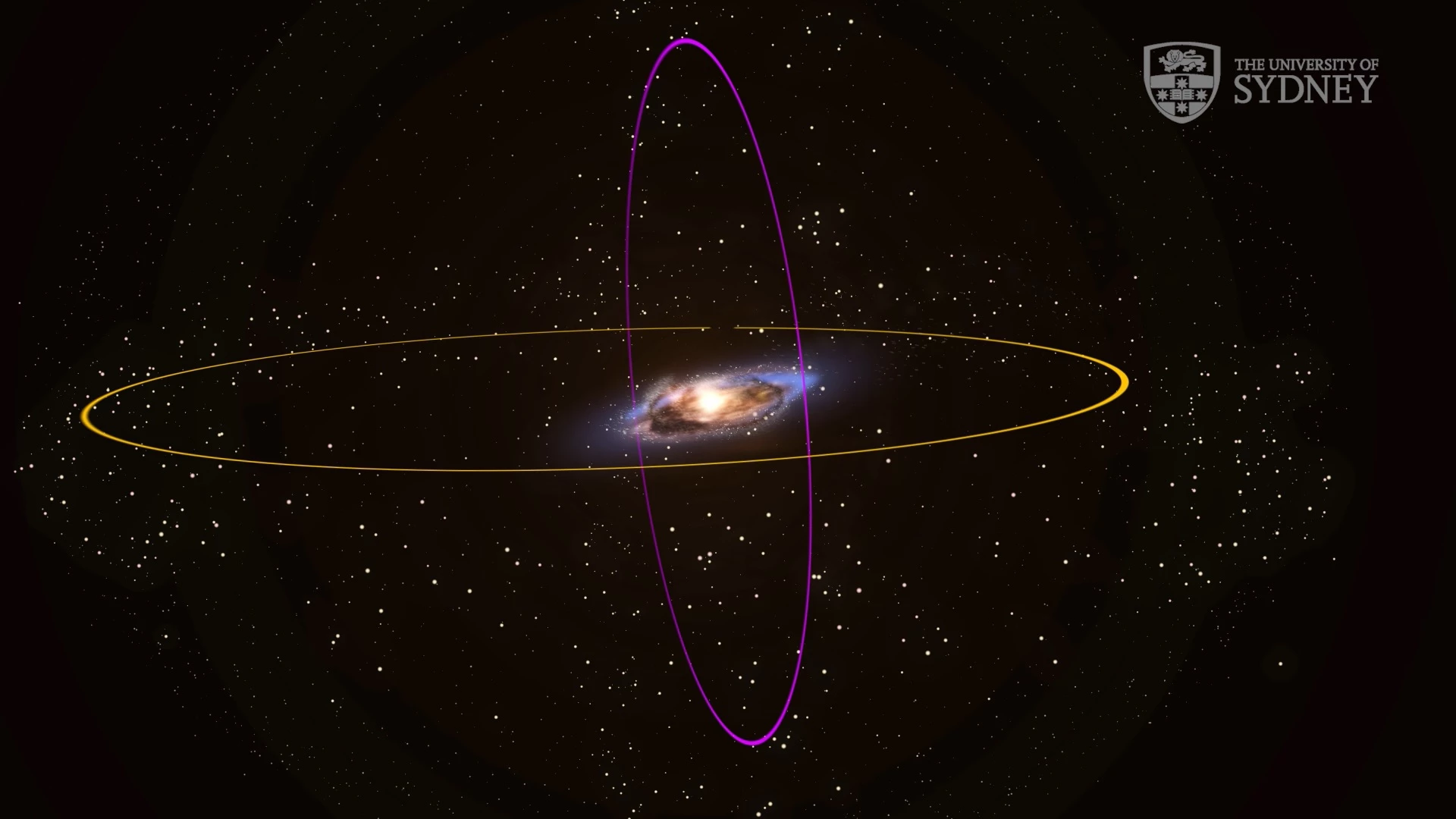A new study has reconstructed the cannibalistic past of the Andromeda galaxy, by identifying the remains of small galaxies that have been fed upon by the cosmic monster. The research could help shed light on the future demise of our galaxy, which is set to collide with Andromeda in roughly four billion years.
Astronomers have long been aware that the outwardly tranquil appearance of most spiral galaxies hides a violent, homicidal past. Over cosmic timescales, the gravitational pull of monster galaxies draws in smaller neighboring galaxies. These helpless collections of stars and stellar gas are shredded, and eventually absorbed by the aggressor.
Our own Milky Way is guilty of this sin, having devoured numerous smaller galaxies over the course of its roughly 13.6 billion-year life. These mergers are thought to be an important factor in the evolution of large galaxies, allowing them to grow, and often triggering intense bouts of star formation.
For the new study, astronomers tracked the motions and velocities of 77 compact star clusters orbiting in Andromeda’s stellar halo – a vast collection of stars that have coalesced in a sphere surrounding the wandering galaxy.
Stellar halos are of great interest to astronomers looking to reconstruct how ancient galactic encounters unfolded, as evidence of the feeding events in the form of leftover stars can be preserved in the halo for billions of years. By looking at how the remnant stars move, scientists can recreate the events that led them to be there.
An analysis of data collected on Andromeda’s halo has revealed the presence of two distinct populations of clusters that are orbiting perpendicular to each other at a 90-degree angle. According to the researchers, each of the cluster populations represent the remains of galaxies that approached Andromeda from completely different directions, only to be shredded by the larger galaxy's powerful gravitational influence.

"This is very weird and suggests that the extragalactic meals are fed from what’s known as the 'cosmic web' of matter that threads the universe," said Prof. Geraint Lewis, from the Sydney Institute for Astronomy and University of Sydney School of Physics. "More surprising is the discovery that the direction of the ancient feeding is the same as the bizarre 'plane of satellites,' an unexpected alignment of dwarf galaxies orbiting Andromeda."
The younger population of clusters was discovered orbiting along with 'stellar streams,' which are essentially associations of stars that once belonged to a galaxy that was ripped apart and absorbed by Andromeda. The older of the two populations of star clusters had no accompanying stellar streams.
According to the researchers, the most recent of the two galactic binge-eating events may have occurred just a few billion years ago, while the earlier interaction could have taken place up to ten billion years in the past, while Andromeda was still very young.
The discovery that the more ancient of stellar clusters rest on the same plane as a population of dwarf galaxies that currently orbit Andromeda is particularly strange. Previous research in this area had argued that such a collection of dwarf galaxies would be swiftly disrupted by Andromeda’s gravity within the space of a few billion years.
"This deepens the mystery as the plane must be young, but it appears to be aligned with ancient feeding of dwarf galaxies. Maybe this is because of the cosmic web, but really, this is only speculation," said Prof. Lewis.
The research has been published in the journal Nature.
Source: Australian National University





